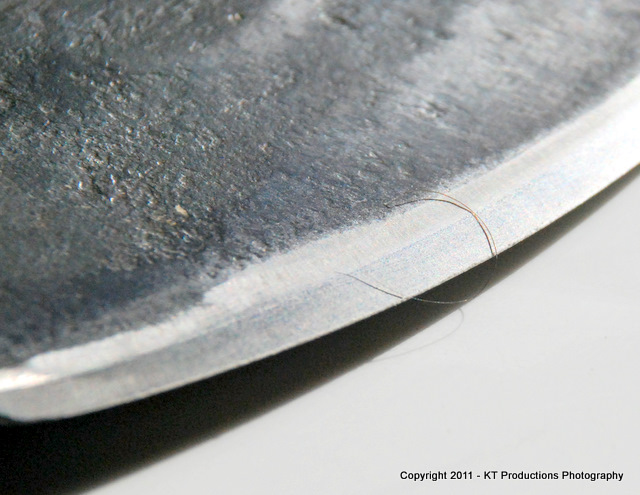jimi43
Established Member
condeesteso":305nvhhj said:Wow! I have tried that kind of thing with plane blades before now (with mixed results) but never with an axe. I assume it's quite sharp then?
Indubitably......

:mrgreen: :mrgreen:
Jim

condeesteso":305nvhhj said:Wow! I have tried that kind of thing with plane blades before now (with mixed results) but never with an axe. I assume it's quite sharp then?

condeesteso":1lxju391 said:I don't come to UKW to view body hair. In future, words alone will suffice. Thank you.
woodbloke":3ilfdt7u said:Matt from WH does a replacement T10 blade which will drop straight into a LN block plane (mine is the low angle) - Robmtr1":3ilfdt7u said:Jimi is right, the T10 steel is a different class, and knocks spots off my LN A2. So much so I might convert all my planes to the T10, matthew told me its hardened to about RC63. I don't own any O1 so can't compare.
I understood the T10 was water hardening - and effectively the Chinese equivalent of the W1 of yore.woodbloke":1w24hyqy said:...the QS oil tempered blades (T10)






Alf":2gkv4n1j said:I understood the T10 was water hardening - and effectively the Chinese equivalent of the W1 of yore.woodbloke":2gkv4n1j said:...the QS oil tempered blades (T10)
I've long fancied that the supposed advantages of "better" steels really come down less to the benefit for the end user, but more for ease of manufacture for the maker. A2 is, as I understand it, a lot easier to deal with than O1 - which is, in turn, less temperamental than W1.
Your no doubt correct Al...my mistookAlf":2y3s2hf2 said:I understood the T10 was water hardening - and effectively the Chinese equivalent of the W1 of yore.woodbloke":2y3s2hf2 said:...the QS oil tempered blades (T10)
Paul Chapman":3ly7mw70 said:Of course, us Clifton users never have to worry about all this crumbly blade stuff because Clifton make their blades properly. Just hone the blades at whatever angle you like and off you go
Cheers :wink:
Paul
Fromey":3f5la3ae said:You all speak in a foreign tongue to me. Is there an *****'s guide to steel hardness, etc. that explains the naming system (A2, O1, T10, WD40, etc.)
I swapped in LN O1 for my LN LA blocks (60 1/2 and 140) as soon as it became available (ordered direct - the 140 was a special order, don't know if it's a stock part now.) Don't remember prep being at all arduous. Guess I hone at around 25°. Edges hold up fine and nice and easy to freshen up.condeesteso":qefn0a9e said:Any hands-on experience with the Lie O1 blades anywhere please??
And most cheap ones also work fine also in my experience. In fact I've never encountered one which wasn't usable. Some lose an edge quicker, but then they are easier to sharpen, etc.bugbear":2rdotlbz said:....
The really simple version is - any plane blade costing over 25 quid from a reputable maker will work well........
Enter your email address to join: